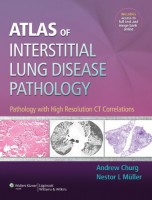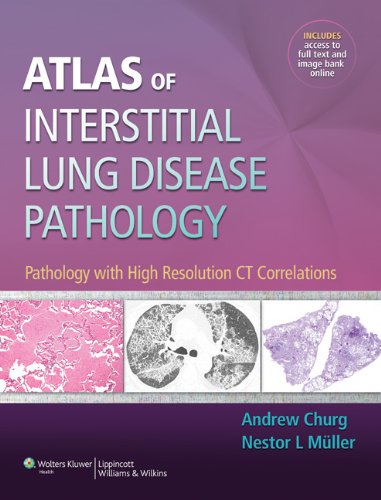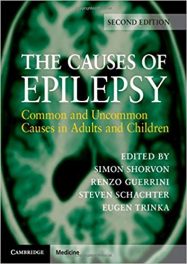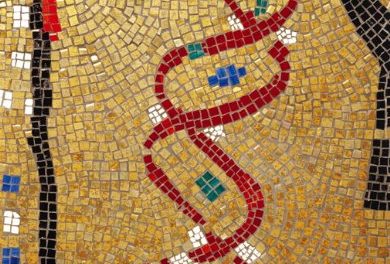 Authors: Andrew Churg and Nestor Muller
Authors: Andrew Churg and Nestor Muller
Publisher: Wolters Kluwer | Lippincott, Williams & Wilkins – 245 page
Book Review by: Nano Khilnani
“Interstitial” means located within but not restricted to a particular organ or tissue, which is typically fibrous in nature. The lung is an example of an organ with such tissue.
According to the Mayo Clinic, interstitial lung disease (ILD) refers a large group of disorders, most of which cause progressive scarring of lung tissue. The scarring associated with interstitial lung disease eventually affects your ability to breathe and get enough oxygen into your bloodstream.
Interstitial lung disease has several causes. Two of them are: long-term exposure to hazardous materials, such as asbestos; and autoimmune diseases such as rheumatoid arthritis. In most cases, the causes of ILD remain unknown.
Once lung scarring begins, it is generally irreversible. Medications can slow the damage to the lungs, but many people never regain full use of their lungs. Lung transplants are an option for some people who have ILD.
This book was written for you the clinician, radiologist, pathologist, or other physician who diagnoses and treats lung diseases and disorders.
The authors point out that the major problem that arises when dealing with interstitial lung disease is confusion. They write that clinicians can name more than 150 “separate entities” or types of ILD.
From the pathologist’s viewpoint, there are many fewer diagnosable patterns. But how to make those patterns correspond to clinically defined diseases when there is considerable overlap in the morphology (form, structure and function) of these various conditions?
Another source of confusion in diagnosing whether someone has ILD is that much of what is called “interstitial” lung disease is really characterized by processes that take place largely in the airspaces or those that affect primarily small airways. Two examples are BOOP (bronchiolitis obliterans organizing pneumonia) and constrictive bronchiolitis
Churg and Muller also point out that most textbooks that doctors refer to when encountering ILD contain an insufficient number and variety of illustrations. This Atlas addresses that limitation.
This book provides a very large number of illustrations, enough “to give the practicing pathologist a feel for the morphologic spectrum of any given ILD and also to illustrate the various differential diagnoses of any particular condition, something that other textbooks do not provide.”
To help you look at the range of characteristics, conditions, and disorders associated with interstitial lung disease, we provide you here what’s covered in this book. You can either do an overview of the topics or read up intensively on any single or a number of topics:
- General Approach to Interstitial Lung Disease: Clinical and Pathologic Considerations
- Imaging in Interstitial Lung Disease
- Biopsy Choices and Handling in Interstitial Lung Disease
- Acute Interstitial Pneumonia (AIP)
- Bronchiolitis Obliterans Organizing Pneumonia (BOOP)
- Usual Interstitial Pneumonia (UIP)
- Nonspecific Interstitial Pneumonia (NSIP)
- Respiratory Bronchiolitis with Interstitial Lung Disease (RBILD) and Desquamative Interstitial Pneumonia (DIP)
- Combined Fibrosis with Emphysema
- Langerhans Cell Histiocytosis (LCH) (Eosinophilic Granuloma of Lung)
- Introduction to Granulomatous Forms of Interstitial Lung Disease
- Hypersensitivity Pneumonitis (HP)
- Sarcoid
- Granulomatous Interstitial Lung Disease in Common Variable Immunodeficiency
- Eosinophilic Pneumonias
- Pulmonary Alveolar Proteinosis (PAP)
- Lymphangioleiomyomatosis (LAM)
- Drug Reactions Producing Interstitial Lung Disease
- Lymphoid and Hematopoietic Processes Producing a Pattern of Interstitial Lung Disease
- Bronchiolitis
- Interstitial Lung Disease in Patients with Collagen Vascular Diseases
- Pneumoconioses Producing a Pattern of Interstitial Lung Disease
- Miscellaneous Forms of Interstitial Lung Disease
- Mimics of Interstitial Lung Disease
Authors:
Andrew Churg, MD is Professor of Pathology at the University of British Columbia; and Pathologist at Vancouver General Hospital in Vancouver, British Columbia, Canada
Nestor L. Muller, MD, PhD is Professor Emeritus of Radiology at the University of British Columbia in Vancouver, British Columbia, Canada







